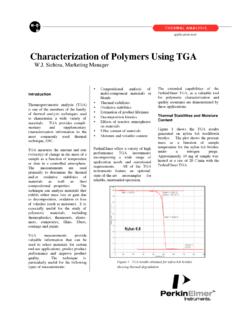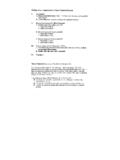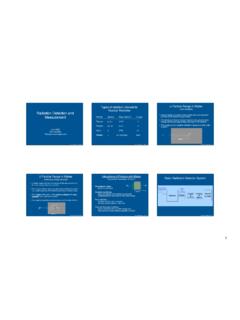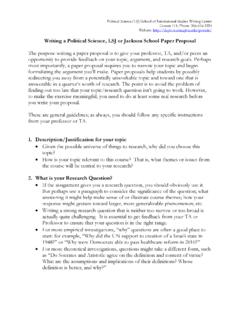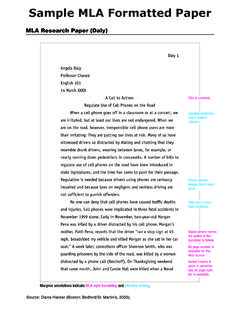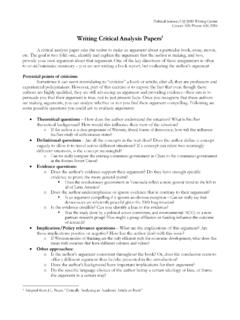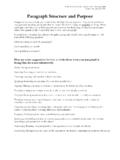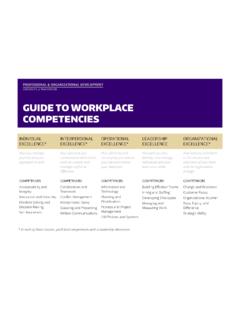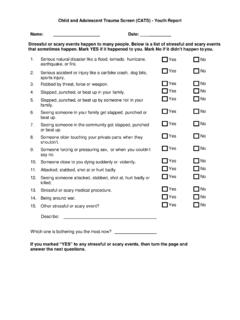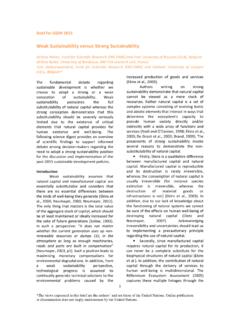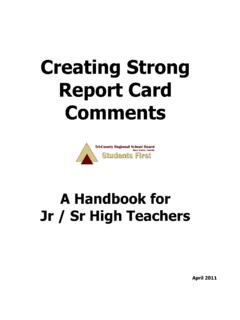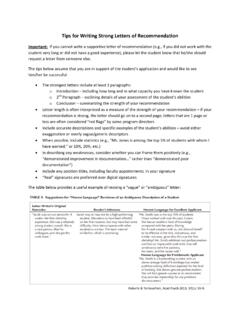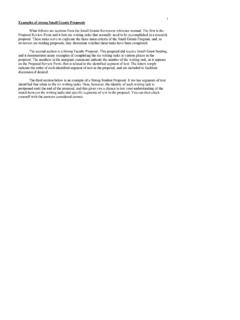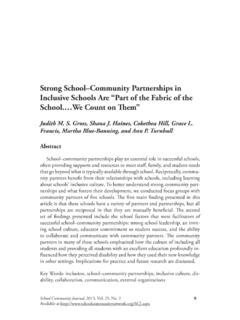Transcription of Page Strong Body Paragraphs - University of Washington
1 Page 1 of 3 Courtesy the Odegaard Writing & Research Center < strong >Strongstrong > < strong >bodystrong > < < strong >Strongstrong > >Paragraphsstrong >Strongstrong > > A < strong >Strongstrong > < strong >bodystrong > paragraph explains, proves, and/or supports your paper s argumentative claim or thesis statement. If you re not sure how to craft one, try using this handy guide! 1. INSERT A TOPIC SENTENCE: Encapsulates and organizes an entire paragraph. Although topic sentences may appear anywhere in a paragraph, in academic essays they often appear at the beginning. When creating a topic sentence, ask yourself what s going on in your paragraph. Why you chosen to include the information you have? Why is the paragraph important in the context of your argument or thesis statement?
2 What point are your trying to make? It should be noted that relating your topic sentences to your thesis can help strengthen the coherence of your essay. If you include an argumentative claim or thesis statement in your introduction, then think of incorporating a keyword from that statement into the topic sentence. But you need not be overly explicit when you echo the thesis statement. Better to be subtle rather than heavy-handed. Do not forget that your topic sentence should do more than just establish a connection between your paragraph and your thesis. Use a topic sentence to show how your paragraph contributes to the development of your argument by moving it that one extra step forward.
3 If your topic sentence merely restates your thesis, then either your paragraph is redundant or your topic sentence needs to be reformulated. If several of your topic sentences restate your thesis, even if they do so in different words, then your essay is probably repetitive. Although most < < strong >Strongstrong > >Paragraphsstrong >Strongstrong > > should have a topic sentence, there are a few situations when a paragraph might not need a topic sentence. For example, you might be able to omit a topic sentence in a paragraph that narrates a series of events, if a paragraph continues developing an idea that you introduced (with a topic sentence) in the previous paragraph, or if all the sentences and details in a paragraph clearly refer perhaps indirectly to a main point.
4 The vast majority of your < < strong >Strongstrong > >Paragraphsstrong >Strongstrong > > , however, should have a topic sentence. 2. EXPLAIN YOUR TOPIC SENTENCE: Does your topic sentence require further explanation? If so, add another 1-2 sentences explaining your topic sentence here. 3. INTRODUCE YOUR EVIDENCE: Most academic papers require students to integrate evidence (often quotes, but it can also include statistics, figures, common sense examples, etc.) to support the claim(s) made in the paragraph and/or the paper as a whole. When including evidence, make sure it is integrated smoothly into the text of the paper. Readers should be able to move from your words to your evidence without feeling a logical or mechanical jolt.
5 When introducing quotes, always a) identify the source and b) summarize to provide context. Many terms may be used to introduce quoted material: asserts, believes, claims, comments, confirms, declares, defines, describes, explains, indicates, makes clear, proposes, etc. However, these terms are not interchangeable. Make your choice based on your meaning. Example #1: All of us know the grammar of our own language because, as Robert C. Pooley writes, "grammar is the structure: the observation of what people do when they use English words in discourse (95). Page 2 of 3 Courtesy the Odegaard Writing & Research Center Example #2: Edward P. J.
6 Corbett, one of America's most distinguished rhetoricians, defines grammar clearly "as the study of how a language 'works'--a study of how the structural system of a language combines with a vocabulary to convey meaning" (111). 4. INSERT YOUR EVIDENCE: Insert/drop-in your supporting evidence (often quotes but again, evidence can also be in the form of personal examples, facts, statistics, etc.). 5. UNPACK YOUR EVIDENCE: Explain what the quote means and why its important to your argument. The author should agree with how you sum up the quotation this will help you establish credibility, by demonstrating that you do know what the author is saying even if you don t agree.
7 Often 1-2 sentences tops (unless you evidence is particularly long or complicated that is). 6. EXPLAIN YOUR EVIDENCE: No matter how good your evidence is, it won t help your argument much if your reader doesn t know why it s important. Ask yourself: how does this evidence prove the point you are trying to make in this paragraph and/or your paper as a whole? Can be opinion based and is often at least 1-3 sentences. 7. INSERT A CONCLUDING SENTENCE: End your paragraph with a concluding sentence or sentences that reasserts how your paragraph contributes to the development of your argument as a whole. So, to 1. Insert a Topic Sentence 2. Explain Your Topic Sentence 3.
8 Introduce Your Evidence 4. Insert Your Evidence 5. Unpack Your Evidence 6. Explain Your Evidence 7. Insert a Concluding Sentence Example #1: Claim: In Amy Tan s short story Two Kinds, the author leads us on a journey of a mother s expectations for her daughter to become a prodigy are too high and willingly not obtainable. Upon a closer analysis of the writing, one can argue that the mother is not allowing her daughter to become her own person. She is instilling all hopes of her lost children on her sole child. In due course this short story looks at whether or not the pressure from the mother, hinders the daughter.
9 Sample < strong >bodystrong > Paragraph: (1) Upon a further examination, the mother s constant pressure on the daughter was beginning to wear on her. (2) Jing-mei s mother would consistently give her daughter tests and the expectations to succeed were high. (3) As the daughter states right after she failed to perform well at the climatic piano recital (4) After seeing my mother s disappointed face once again, something inside me began to die. I hated the tests, the raised hopes and failed expectations (Tan 1152). (5,6) After seeing the dissatisfaction from her mother s face, the tests and hopes for success, began to eat away at her. It began to tear at the daughter s emotional state.
10 (7) The consistent disappointment pushed the daughter to the point where she would not become someone she is not. Page 3 of 3 Courtesy the Odegaard Writing & Research Center Example #2 Claim: The < strong >Universitystrong > of Texas (UT) provides a diversity of social, academic and athletic opportunities for students. This can be a powerful positive force, but it can also detract from students abilities to manage their time. More attention to time management training is needed to ensure that all UT students graduate with the ability to succeed in their chosen careers Sample < strong >bodystrong > Paragraph: (1) While there is little doubt that extracurricular opportunities at UT are a positive and critical component of students overall development, providing students with time management skills is equally important.
